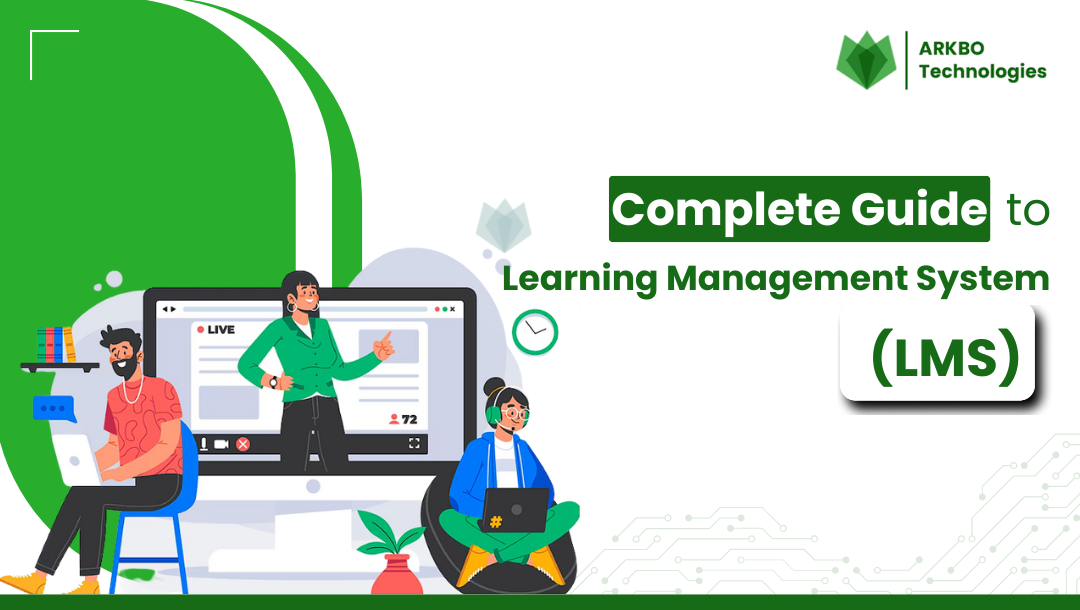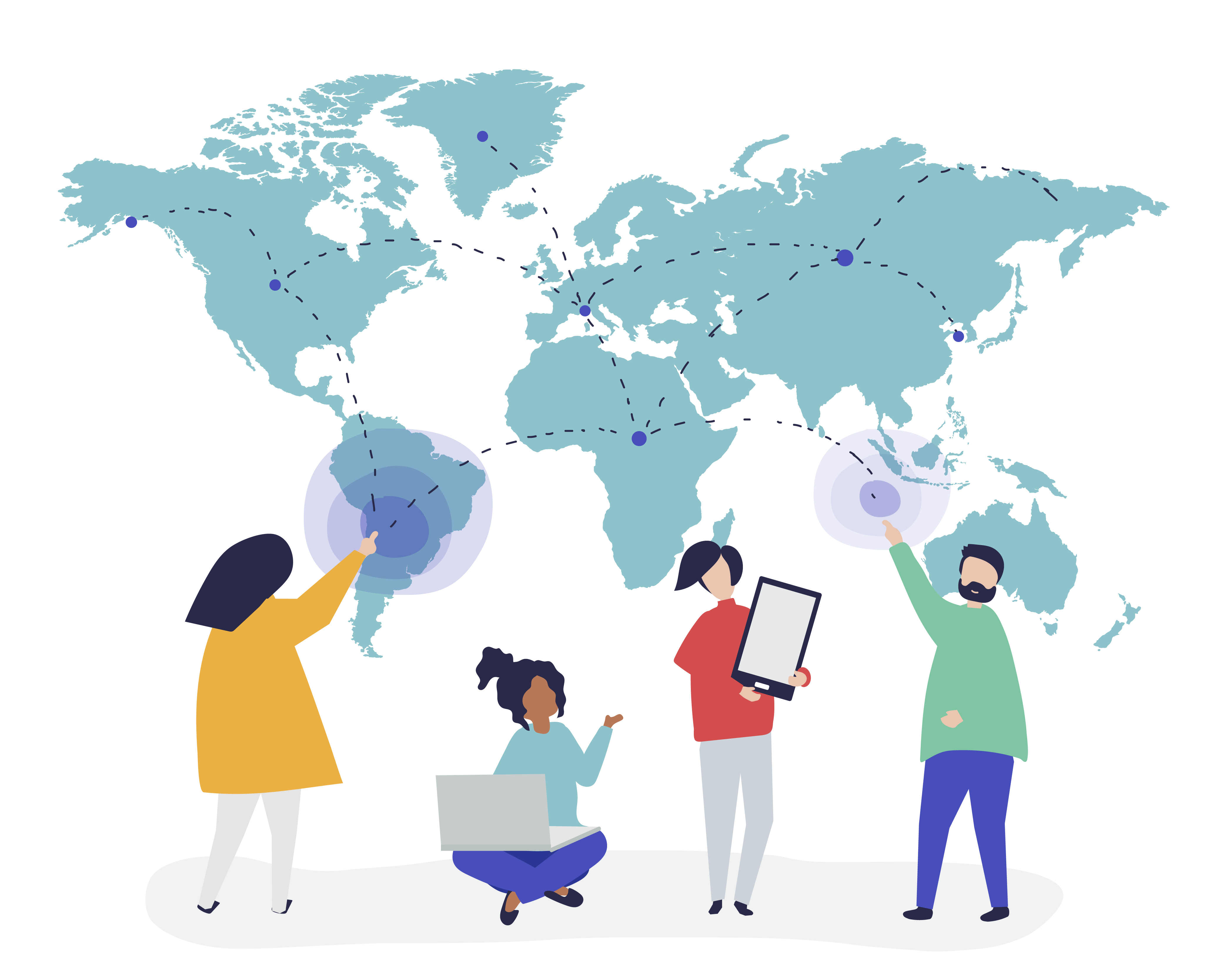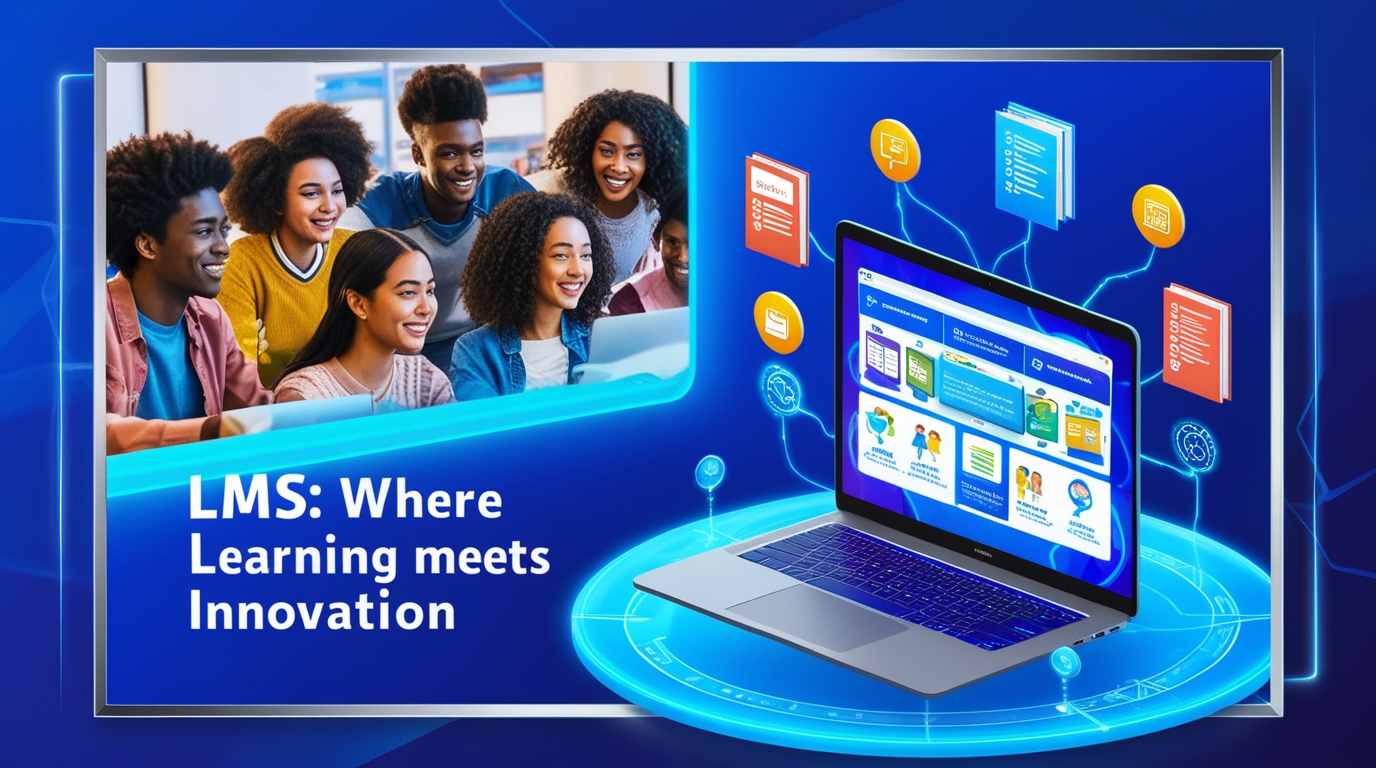
Organizations can leverage growth, efficiency, and productivity by empowering their workforce. For that, regular skill-building training is necessary.
Traditional or on-site organizational training has limited flexibility with scheduling, location, and tracking, is expensive, and is difficult to scale for large groups or multiple locations. To tackle that, an online learning platform like an LMS system is needed.
In this blog, we have included everything you need to know about an LMS, its benefits, and why ARKBO LMS is the ideal solution for your organization.
Learning management system (LMS): A brief definition
A Learning Management System (LMS) is a software or platform designed to facilitate, deliver, and track training programs and learning initiatives. LMS can be used across industries to train employees, partners, and customers.

Modern LMS platforms, like ARKBO LMS, offer personalized learning experiences, integrate seamlessly with existing HR systems, and deliver measurable results. Using an LMS system can save time, reduce costs, and improve employee performance.
Components of a Learning Management System
A Learning Management System (LMS) serves several important functions that enhance the training experience. LMS system allows for course creation and management. You can include pre-existing content as well as custom content for employee training.
With built-in assessment and testing tools in LMS, the administrators can assign roles, track progress, evaluate learner progress, and manage groups. Using the reporting and analytics, they can predict the learning path or learning curve of employees.
Most of the LMS systems are built with a mobile compatibility feature which helps ensure learners in access to content anytime, anywhere. In fact, they can access learning materials on desktops, tablets, and mobile phones.
LMS platforms use gamification, such as points, badges, and leaderboards, to keep learners motivated. Also, the social learning tools facilitate peer learning. You can also connect LMS with other systems like HRM, CRM, video conferencing tools, and content libraries.
Now, let’s look at those who can benefit by using LMS.
Organizations can introduce the LMS system to help employees upgrade their skills and knowledge. They use this system to access training modules, participate in professional development courses, and earn certification.
With an interactive and gamified learning environment, employees stay engaged and are most likely to complete courses fast or on time.
LMS is great for human resource managers as this platform helps streamline employee training and development processes.
They can check for employee competency gaps, training needs identification, and eventually assign relevant training and courses. With an AI-focused LMS like ARKBO LMS, they can monitor progress and ensure employees meet compliance standards.
Further, HR professionals can make data-driven decisions that support employee growth and organizational goals.
Trainers and instructors can also utilize the LMS to create, manage, and deliver learning content to their audience. They can design interactive lessons, upload videos, prepare quizzes, and manage assignments all from one centralized platform.
Trainers can engage learners through discussion forums and real-time feedback, while also analyzing learner performance through dashboards. This digital approach helps in maintaining consistency in learning delivery across teams or classrooms.
L&D managers in an organization can rely on LMS to design, implement, and evaluate comprehensive learning strategies. The training data can be used to measure the effectiveness of programs and make data-driven decisions to improve content and delivery.
Compliance officers are professionals responsible for protecting the organization from legal risks and regulatory penalties. They can use LMS platforms to ensure that employees meet mandatory regulatory and legal training requirements. Training on compliance topics such as workplace safety, data security, and ethical conduct can be provided.
Educators and professors can use LMS platforms for content/course creation, content management, assignment records, and communicating with students. Further, the online lectures, quizzes, grading, and feedback can become more accessible and organized.
Administrators can manage user enrollment, course management, and reporting. They can set permissions and monitor system usage. They can maintain an efficient and user-friendly system to meet the diverse needs of learners, instructors, and management.
Curious about what situations LMS can be used in? Here are some of the circumstances when organizations can use this learning and management system.
Traditional training programs are mostly on-site, time-consuming, and difficult to scale across departments. Most often, such training lacks tracking or follow-up. These issues can be resolved by the LMS system; training becomes more consistent, scalable, and measurable.

First of all, an LMS platform can include training materials based on roles, departments, or goals. Organizations can deliver structured learning paths that help employees improve their job-related skills, adopt new tools, and stay aligned with company goals.
Read our blog on ‘How to Engage Employees Effectively with Personalized LMS Content ?’
Manual onboarding of the new hires can be repetitive, disorganized, and depend on HR's availability. Also, the important information might be missed or inconsistently communicated.
So, using an LMS during the onboarding process is a better option. It ensures that new hires receive consistent and well-organized information about the company’s culture, policies, tools/software, processes, and expectations.
Once hired, the onboarding modules can be assigned; this helps the new employees to speed faster and reduce the administrative burden on HR teams.
When an employee fails to meet compliance requirements, it can lead to legal penalties, reputation damage, or operational shutdowns. Manual compliance training is error-prone and inefficient.

Organizations can invest in LMS to deliver, track, and document compliance and regulatory training for employees. Courses like data privacy, workplace safety, and anti-harassment can be scheduled and monitored automatically. Further, scheduled reminders, course deadlines, and digital certificates can also be included.
LMS is a powerful tool for organizations that prioritize upskilling. This system offers skill-building programs and professional certifications.

Employees can access role-based training and certification programs anytime, based on their career path or interests. With such training, employees can get a clear path to career advancement while also meeting organizational development goals.
With an LMS system is employees and employers have clear visibility into growth and readiness for new roles.
Remote work is getting popular; thus, the need for flexible training has also increased. LMS is the best option in such a context as it offers 24/7 access to learning materials from any location or device.

Even if employees are working from home, traveling, or in different time zones, they can continue learning without disruption. LMS software like ARKBO LMS offers an inclusive learning opportunity for all employees.
Inconsistent training materials and delivery are one of the biggest problems companies with multiple branches face. Further, it can lead to performance variations across locations. To solve these issues, a centralized LMS is the best option.

An LMS ensures standardized learning content and updates to all branches of an organization.
In the long run, it maintains consistency in quality, compliance, and brand voice, no matter where employees are based.
Offline tracking of employee learning is difficult, subjective, and time-intensive. This leads managers to measure how effective the training was. In such a case, managers, HR, and L&D teams can use an LMS system.

The detailed analytics and reports from LMS give a clear idea of course completion, test scores, learner engagement, and progress over time. Such details help managers and HR teams make informed decisions and close skill gaps.
What are the advantages of using LMS?
With an LMS, employee training becomes easier as all learning materials can be kept in one centralized platform and accessed anytime.
LMS allows self-paced learning, so employees can go through courses at their own pace and learn via videos and quizzes. They can track their progress, focus on skills that align with their career goals, and even earn certificates that boost their credentials.
In case of organizations, the LMS system is cost-effective, boosts employee engagement, cuts costs on travel and printed materials, and most importantly, supports employee growth and retention.
Read our blog on the Importance of Learning Management Systems in The Organization for detailed information.
Let’s look into various LMSs that are popular in the market.
A SaaS LMS (Cloud-based LMS) is hosted by a third-party provider, managed by the vendor, and accessed through a web browser. SaaS LMS is accessible from anywhere with an internet connection, making it ideal for remote or hybrid teams.
But SaaS LMS offers limited customization and less control over updates and system changes. This system heavily relies on internet access and shows low data privacy.
You can directly install on-premise LMS onto an organization’s internal servers. This type of LMS is particularly useful for organizations with strict data compliance requirements or sensitive information, like government agencies or financial institutions.
On-premise LMS can be managed by the organization’s IT team. However, it does require in-house technical support and infrastructure.
A mobile LMS is designed for use on smartphones and tablets. Learners can access courses, take quizzes, and track progress anytime and anywhere. This type of LMS boosts engagement and flexibility in learning for remote workers or employees on the go.
In an open-source LMS platform, organizations can use the source code to customize the system as needed. Organizations can tailor features, design, and functionality according to their unique training needs without licensing costs.
This system is free to use, but technical expertise is required for installation and maintenance.
A custom-built LMS is developed to meet a specific organization’s needs, goals, and branding. It offers full control over features, interface, & user experience, and delivers a unique learning experience. One drawback of a custom-built LMS is that it requires more time and investment.
Another type of LMS is a self-hosted LMS, which is installed on the organization’s servers but typically comes from open-source or licensed LMS providers. It offers more flexibility than cloud-based solutions. You can also manage updates, integrations, and user data internally, provided you have the right IT resources.
However, this LMS requires in-house technical expertise, regular maintenance, and infrastructure.
An LMS allows organizations to upload training materials like videos, quizzes, and documents. Users are then registered and assigned roles like learner, instructor, or admin.
Once materials and roles are assigned, training can be organized via live classes, recorded videos, or self-paced lessons. The instructor or LMS tracks progress, grades quizzes, and gives feedback. Trainers or admins can see reports to check how well learners are doing.
It can be a daunting task to find the right LMS for your organization. But you can consider the following points to find the perfect fit for your organization.
Be sure of your training goals. These goals can be educating the newly onboarded, compliance training, or upskilling your team.
Have a list of the ‘non-negotiable’ features on your LMS. These features can be industry-standard security, mobile-responsive design, robust content management, personalized learning paths, and detailed reporting.
The LMS must have a user-friendly interface for both learners and administrators. Ensure the LMS supports inclusive learning in the organization.
Ensure that the LMS can integrate with HR software, CRM systems, or other business applications to keep everything running smoothly.
Choose an LMS that can handle more users as your business expands.
Look for the LMS that fits your budget, including both initial costs and ongoing subscription fees.
All of such features are readily available in ARKBO LMS- A leading LMS platform in Nepal.
Final Thoughts
A Learning Management System (LMS) is a digital platform that can be used by organizations to deliver, track, and manage employee training. In fact, LMS platform organizations should invest in it because it is the future of employee training.
An LMS system can be used in onboarding, compliance training, skill development, and remote learning. It benefits employees, HR managers, trainers, and compliance officers. Whether you're training new hires or upskilling your team, LMS makes the process easier, more consistent, and effective across multiple locations.
ARKBO LMS is a popular LMS in Nepal that offers flexible, mobile-friendly, and integrated solutions for organizations.
Ready to Transform Your Workplace? Contact us today to schedule a demo or learn more about ARKBO LMS.
An LMS supports a wide range of training materials. You can upload videos, audio files, PDFs, Word documents, PowerPoint presentations, quizzes, surveys, etc. Many LMS platforms also support interactive content, simulations, and gamified learning modules to keep the training engaging.
An LMS lets you see course completion, test scores, time spent on lessons, and overall learner activity through dashboards and reports. Most platforms include dashboards and reports that give real-time insights, making it easy to spot learners who need support or follow-up.
Yes, most modern LMS platforms allow you to create and issue custom certificates automatically when a learner completes a course or passes an assessment. These certificates can include details like the learner’s name, course title, date of completion, and even your company’s branding or signatures.
Absolutely. Many LMS platforms are designed to integrate smoothly with HRM systems, payroll software, CRMs, and other business tools. This helps streamline user management, sync employee data, assign training based on job roles, and automate reporting across platforms.
The setup time depends on the complexity of your needs. A basic LMS with standard features can be set up in a few days. However, if you need customization, content uploads, branding, and integrations with other systems, it may take anywhere from 2–6 weeks. Most LMS providers offer onboarding support to speed up the process.
Yes, most LMS platforms allow data migration. You can transfer existing user records, course completion data, certificates, and training materials into the new system. The process may require some formatting or support from the LMS provider, but it helps maintain a complete learning history for all employees.